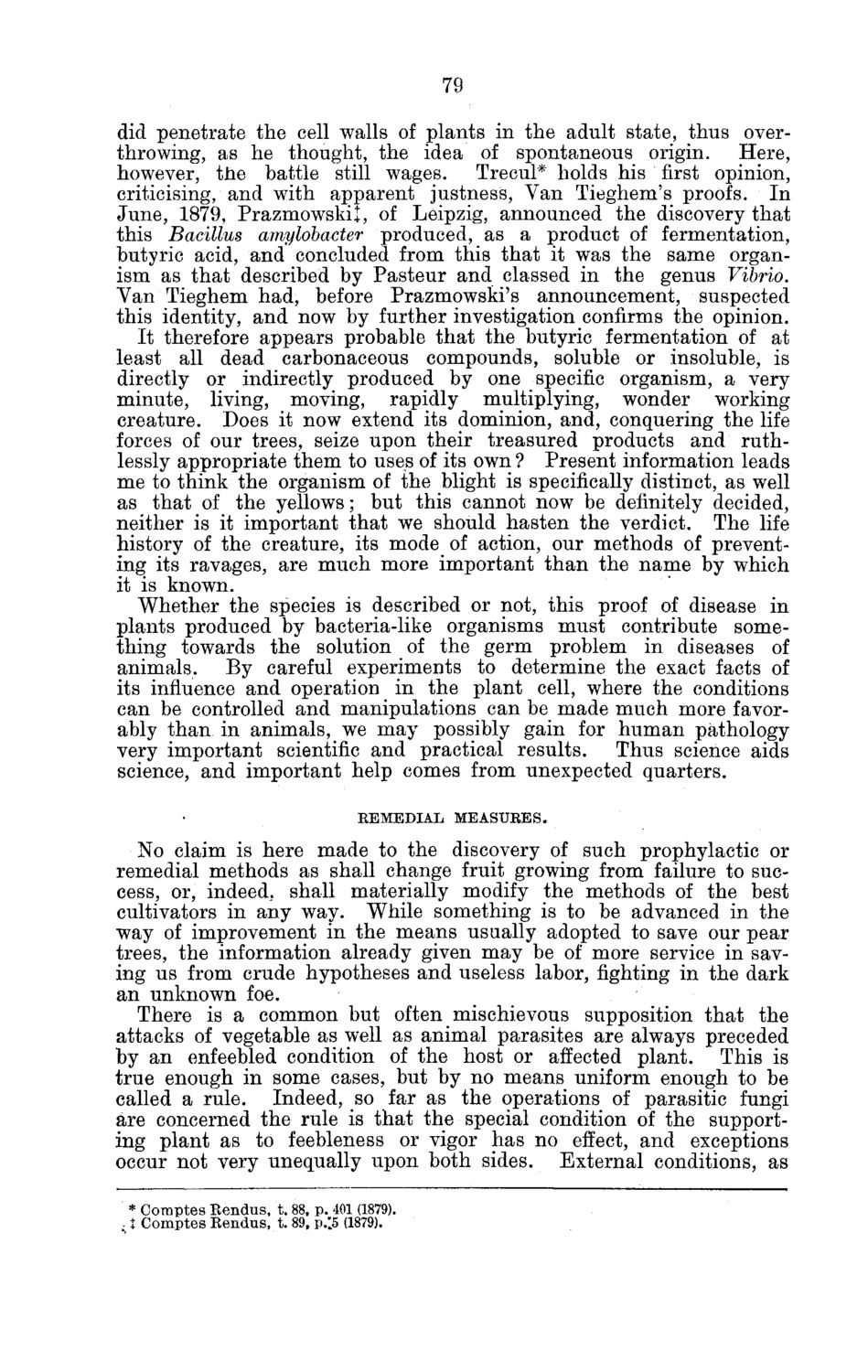| |
| |
Caption: Board of Trustees Minutes - 1880
This is a reduced-resolution page image for fast online browsing.

EXTRACTED TEXT FROM PAGE:
79 did penetrate the cell walls of plants in the adult state, thus overthrowing, as he thought, the idea of spontaneous origin. Here, however, the battle still wages. Trecul* holds his first opinion, criticising, and with apparent justness, Van Tieghem's proofs. In June, 1879, Prazmowskil, of Leipzig, announced the discovery that this Bacillus amylobacter produced, as a product of fermentation, butyric acid, and concluded from this that it was the same organism as that described by Pasteur and classed in the genus Vibrio. Van Tieghem had, before Prazmowski's announcement, suspected this identity, and now by further investigation confirms the opinion. It therefore appears probable that the butyric fermentation of at least all dead carbonaceous compounds, soluble or insoluble, is directly or indirectly produced by one specific organism, a very minute, living, moving, rapidly multiplying, wonder working creature. Does it now extend its dominion, and, conquering the life forces of our trees, seize upon their treasured products and ruthlessly appropriate them to uses of its own ? Present information leads me to think the organism of the blight is specifically distinct, as well as that of the yellows; but this cannot now be definitely decided, neither is it important that we should hasten the verdict. The life history of the creature, it's mode of action, our methods of preventing its ravages, are much more important than the name by which it is known. Whether the species is described or not, this proof of disease in plants produced by bacteria-like organisms must contribute something towards the solution of the germ problem in diseases of animals. By careful experiments to determine the exact facts of its influence and operation in the plant cell, where the conditions can be controlled and manipulations can be made much more favorably than in animals, we may possibly gain for human pathology very important scientific and practical results. Thus science aids science, and important help comes from unexpected quarters. KEMEDIAL MEASURES. No claim is here made to the discovery of such prophylactic or remedial methods as shall change fruit growing from failure to success, or, indeed, shall materially modify the methods of the best cultivators in any way. While something is to be advanced in the way of improvement in the means usually adopted to save our pear trees, the information already given may be of more service in saving us from crude hypotheses and useless labor, fighting in the dark an unknown foe. There is a common but often mischievous supposition that the attacks of vegetable as well as animal parasites are always preceded by an enfeebled condition of the host or affected plant. This is true enough in some cases, but by no means uniform enough to be called a rule. Indeed, so far as the operations of parasitic fungi are concerned the rule is that the special condition of the supporting plant as to feebleness or vigor has no effect, and exceptions occur not very unequally upon both sides. External conditions, as * Coraptes R e n d u s , t. 88, p . 401 (1879). > X C o m p t e s R e n d u s , t. 89, p.I5 (1879).
| |